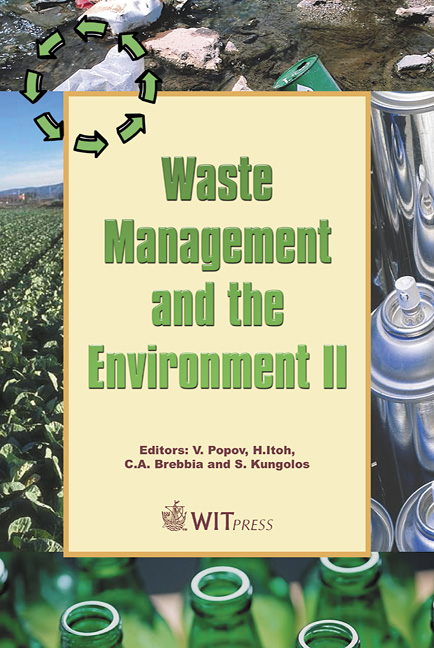Testing Industrial Effluents With Bioassays In Greece
Price
Free (open access)
Transaction
Volume
78
Pages
8
Published
2004
Size
254 kb
Paper DOI
10.2495/WM040511
Copyright
WIT Press
Author(s)
A. Kungolos
Abstract
The primary aim of this study is the investigation of a suitable bioassay that could be potentially correlated to respirometric techniques in order to evaluate industrial wastewater toxicity. Three microbiotests, the crustacean Daphnia magna test, the marine bacterium Vibrio fischeri test and protozoan Tetrahymena thermophila test, were used in order to investigate their potential correlation with a respirometric technique. It was found that the Tetrahymena thermophila test correlates best with respirometric techniques. The toxicities of the effluents of three different groups of industries, located in Thessaloniki, Greece, metal coating, food and dying industries, were also tested. Keywords: effluent toxicity, RODTOX, Microtox, Daphnia magna, Tetrahymena thermophila, Thessaloniki, industrial effluents. 1 Introduction During the last decades there has been an increasing concern on the presence of toxicants in the aquatic environment. Among the bioassays that have been used for the estimation of the toxic effects of chemicals on the ecosystem, microscale procedures, now commonly referred to as microbiotests, have emerged as cost- effective and simple to operate methods [1]. On the other hand, toxicants present in industrial sewage reduce the efficiency of biological wastewater treatment due to intoxication phenomena. The biological treatment of wastewaters is based on the development of a complex community of microorganisms in the aeration tank of the treatment unit. Various techniques have been developed for the monitoring of intoxication phenomena towards the activated sludge in order to ensure the treatment process. Most of toxicity directed approaches for the
Keywords
effluent toxicity, RODTOX, Microtox, Daphnia magna, Tetrahymena thermophila, Thessaloniki, industrial effluents.





